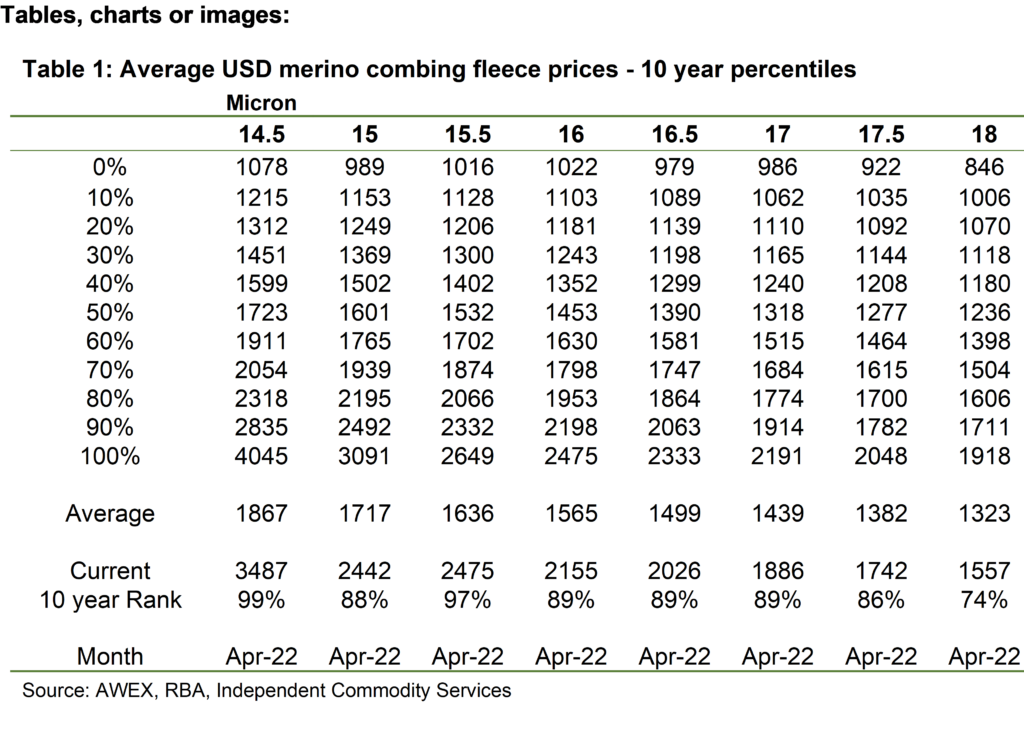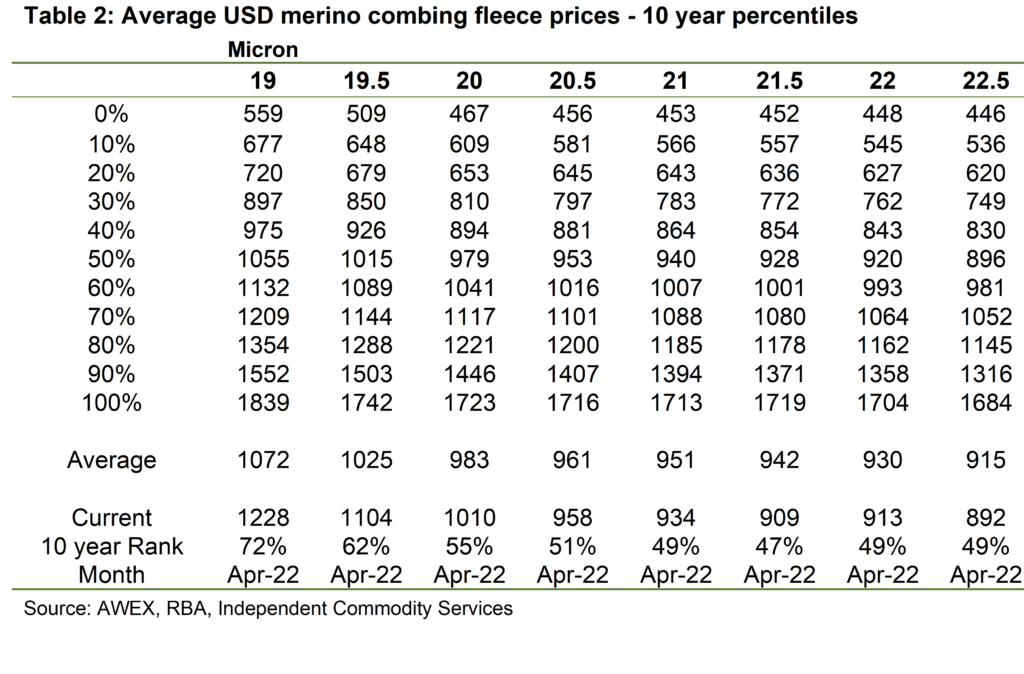Before Easter, Mecardo published 10 year percentile tables for merino combing fleece prices, ranging from 14.5 to 23 micron. Our readers in South America have asked for a similar article in US dollar terms, which is what follows.
To recap, AWEX Micron Price Guides (MPG) run from 16.5 micron to 32 micron, reflecting prices for representative types of wool for each micron category. The link to the makeup of the AWEX MPGs is provided here. This price data is naturally produced in Australian dollar terms. You can read the recent article on percentiles I mentioned (in AUD’s) here.
In this article Mecardo, without the constraints of being the official market reporter, takes a wider approach to developing prices for each half micron by simply averaging eastern sales centre combing length merino fleece (greater than 50 mm), with vegetable matter below 2%, no subjective faults (such as cott, water stain and unscourable colour), a staple strength 30 N/ktx and higher and no RWS lots. The wider approach allows useful price data to be gathered for micron categories on the edge of the Australian merino fibre diameter distribution, both fine and broad sides.
Figure 1 shows the half micron prices for sales in the first half of April (bars) along with the 10 year percentile rank for each half micron category (line). Like the Australian dollar price series the price is relatively flat between 20.0 and 23.0 micron, with the price ranks ranging between 10% and 20% although prices for the very broad edge of the merino distribution can be erratic due to the low volumes sold in Australia. The price rank picks up sharply for micron categories below 20 micron.
The data behind Figure 1 for 14.5 to 18.5 micron is given in Table 1. The 10 year percentile rank (deciles) is given, with the average price for the period shown below that, then the current (mid- April) price and its 10 year rank. The percentile rank ranges from a high 70% for 18.5 micron to an extreme 99% for 14.5 micron. Times are good for fine merino prices.
Table 2 repeats the exercise for 19 through to 23 micron merino fleece, keeping in mind the 22.5-23 micron prices do jump around due to low volumes. Here the effect of exchange rates shows up. In Australian dollar terms the price rank for 20-23 micron merino fleece ranges between 40-50%, solid but unexciting. In US dollar terms the ranks for these micron categories is low, ranging between 10% and 20%. Broad and fine merino US dollar prices have percentile ranks at either end of the spectrum currently.
What does it mean?
After apparel prices plunged in mid-2020 at the onset of the COVID-2 pandemic, recovery has been quite varied. Crossbred wool prices have not recovered (although the supply chain seems to be happy to absorb good volumes out of Australia) and broader merino prices have staged only a weak recovery in US dollar terms, compared to the halcyon days of 2017 and 2018.
Cotton has been
the strongest fibre with fine merino prices also staging and extremely strong
recovery. Just as the apparel market is made up of a range of fibres, the
greasy wool market is made up of a range of semi-independent categories.
Have any questions or comments?
Key Points
- Fine merino US dollar fleece prices are trading at high levels by the standards of the past decade, as well as the past 5 and 20 years.
- In contrast 20-23 micron US dollar fleece prices are trading at low percentile rankings, in the range of 10-20%.
Click on figure to expand
Click on figure to expand
Click on figure to expand
Data sources: AWEX, RBA, ICS , Mecardo




